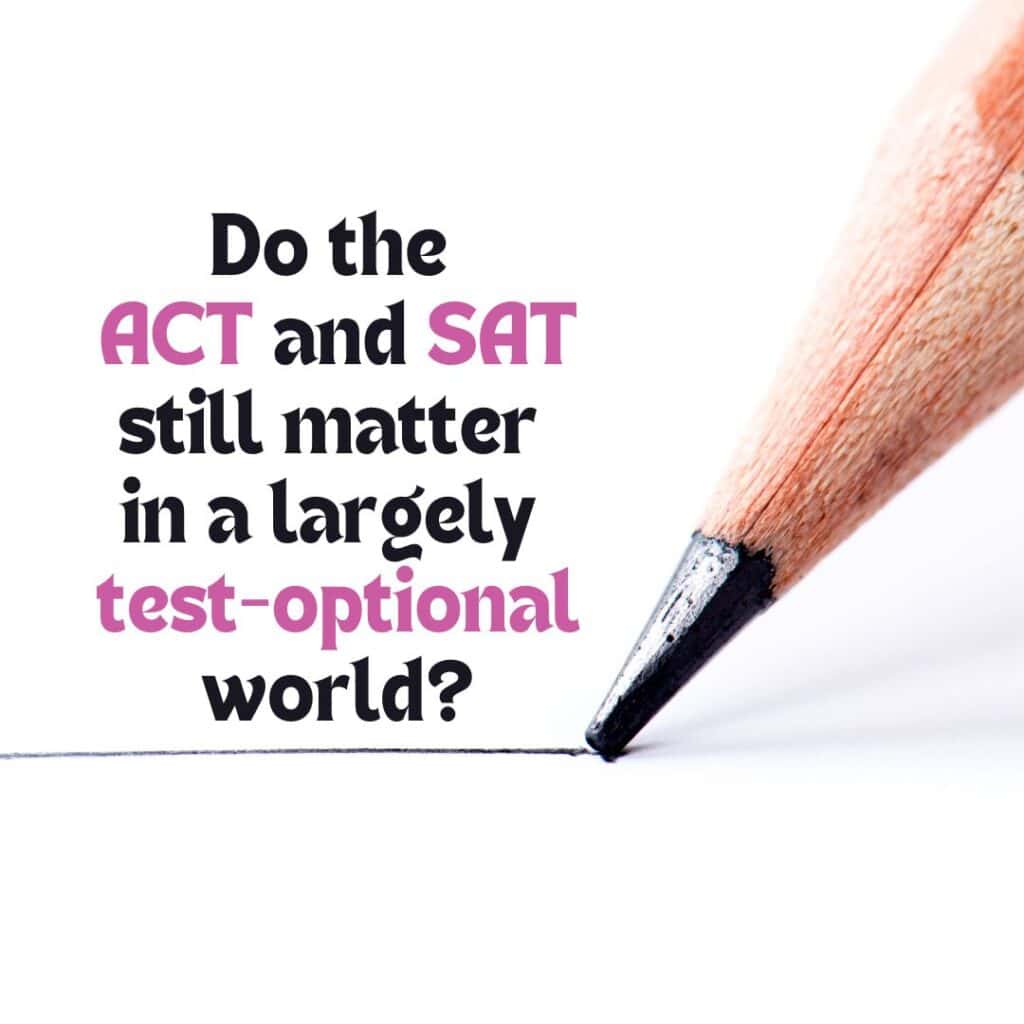
Anyone who lives or works with teenagers understands their unique capacity for selective listening. So, it’s no surprise that, when high schoolers hear that they do not have to submit ACT or SAT scores as part of their applications to the majority of U.S. colleges, they often take this to mean that these tests no longer matter in the admissions process. This is actually the reality at “test-free” colleges, most prominently the California State University and University of California systems, which abandoned all consideration of the ACT and SAT in 2020 and 2021, respectively.
Tellingly, however, the majority of U.S. colleges declined to follow California’s lead, instead adopting “test-optional” policies, under which test scores are considered if submitted. The test-optional movement had been slowly gathering steam since 1969 when Bowdoin College became the first U.S. college to discontinue standardized testing requirements. In subsequent decades, more institutions, primarily small liberal arts colleges, became test-optional. Pre-pandemic, a handful of medium and large schools, including the University of Chicago, Wake Forest University, George Washington University, and Indiana University, followed suit. This movement was primarily driven by diversity, equity, and inclusion concerns, as standardized tests have been shown to favor white, wealthy applicants, who have access to score-boosting resources such as expensive test prep and multiple test administrations.
Despite the growing test-optional traction before the pandemic, few applicants decided to completely forgo standardized testing, which was still required by a vast majority of American institutions. Pandemic safety concerns, however, prompted the widespread adoption of test-optional policies, which upended the standardized testing status quo. Applicants must now navigate a muddled testing landscape, with most universities adopting test-optional policies while some institutions are test-free and still others require testing. The prevalence of test-optional policies understandably leads students and parents to believe that taking and submitting test scores is truly, well, optional. Eager to avoid the expenses and stress around testing, students and parents get excited about empowering messages such as, “The decision of whether or not to have your SAT or ACT considered is entirely yours” from Duke University and “Do what feels right to you” from the University of Pennsylvania.
Getting up at the crack of dawn on a weekend to take a three-hour test probably doesn’t “feel[] right” to most high schoolers, but it may be wise for them to do so anyway. Unlike test-free institutions, which truly devalue testing, “test-optional” does not mean that colleges do not consider or value test scores when they are submitted. While not submitting scores does not disadvantage applicants at test-optional universities, submitting competitive scores can (and often does) advantage students. It’s like when a high school lacrosse coach or band director calls for an “optional” practice or rehearsal. Students don’t have to attend and won’t be penalized for skipping, but the ones who show up may earn themselves more playing time or a concert solo. And, because there are a finite number of minutes in a game or concert, the extra time in the spotlight detracts from what’s allotted to teammates or bandmates.
“Test-optional” is not a one-size-fits-all proposition, in terms of both colleges and applicants. Test-optional policies remove a major barrier for students who further one or more of a college’s institutional priorities and/or test poorly relative to their grades and course rigor. Nevertheless, some test-optional colleges appear to be generally more test-friendly than others. Institutions that discarded testing requirements prior to the pandemic and those with less selective admissions tend to admit students without scores in equal (or greater) numbers than students with scores. But, at many other test-optional colleges, particularly the more selective ones, students with (competitive) scores enjoy higher admit rates than their peers without scores, especially when their profiles are comparable to those of high-achieving students who are likely to test. Absent a compelling “hook” rendering them uniquely desirable in applicant pools teeming with academically-qualified applicants, students from well-resourced high schools generally fare better with a competitive test score than without.
When deciding whether, when, and how often to take the ACT or SAT, students and parents should assess the testing policies of the colleges to which the student is applying and the likelihood of whether testing would enhance the student’s applications. Is the student likely to earn a score that either elevates the academic profile or “matches” it with a corroborating data point (score ≥ grades)? Although it’s tempting for self-proclaimed “bad test-takers” to make a lackluster effort at test prep (or skip testing altogether), all students would benefit from submitting a score that is on par with (or better than) their grades and course rigor. This is particularly true for students who are applying to selective universities where most of their classmates are likely to submit scores.
It may make sense to forgo testing however, for students who know there is very little chance of earning a test score commensurate with their grades and curricular rigor and are applying to less selective test-optional institutions and/or schools that wholeheartedly lean into their test-optional philosophy. Yet, students who do not test also must adjust their expectations accordingly. The removal of the testing requirement does not magically open the admissions gates to selective schools like the University of Wisconsin-Madison, The Ohio State University, the University of Pennsylvania, or the University of Southern California. In fact, test-optional policies make admissions more competitive for all “unhooked” students, with or without scores, because there are now so many more applicants for the same number of spots. Testing may indeed be optional in the modern admissions climate, but it’s hardly unimportant.
